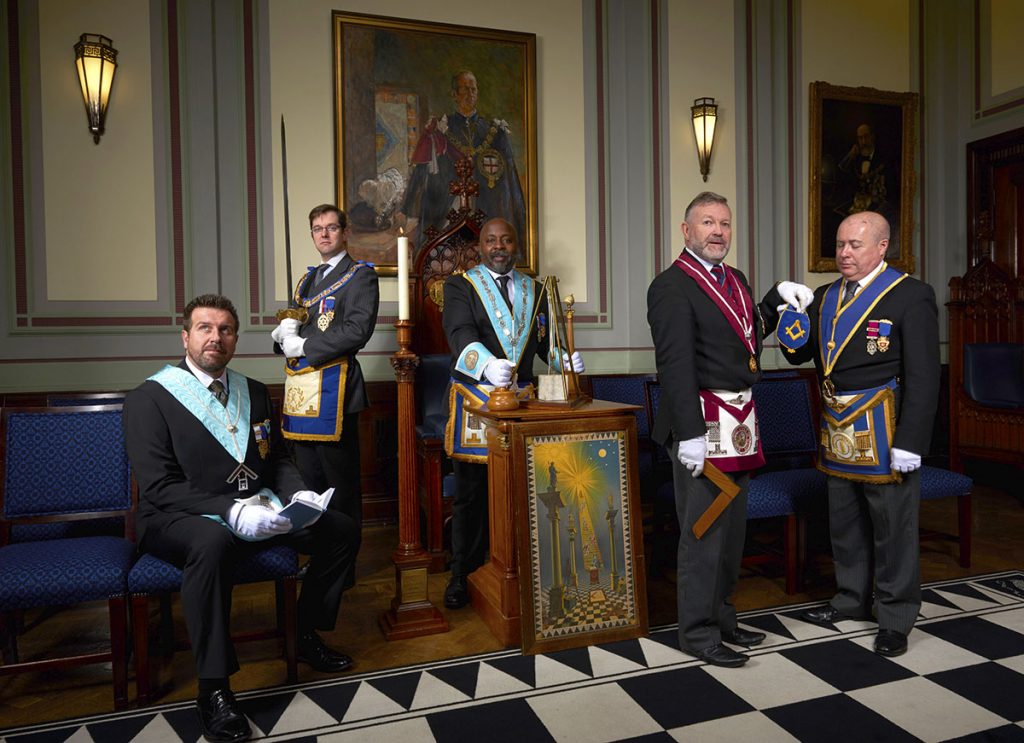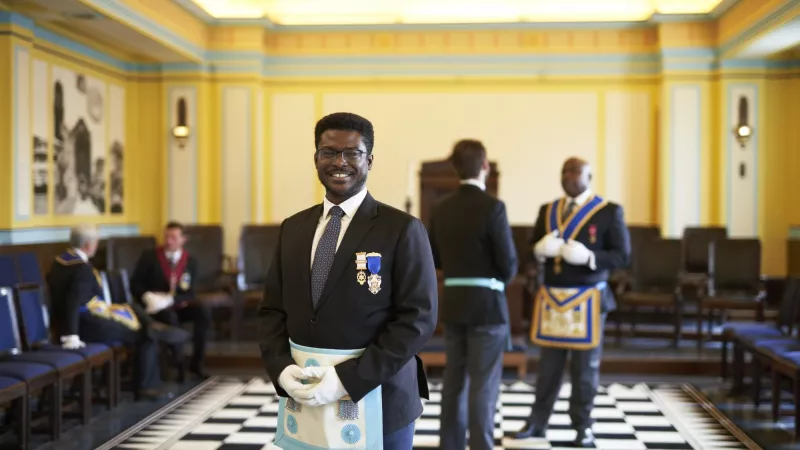Step-by-Step Manual on How to Become a Freemason for New Members
Step-by-Step Manual on How to Become a Freemason for New Members
Blog Article
Checking Out the Mysteries of the Freemason: What You Need to Know
The Freemason, a term frequently shrouded in intrigue and conflict, stands for an intricate tapestry of historic fact and modern myth. Established in the late 18th century, this secret society was initially rooted in the Enlightenment's suitables however has since become associated with conspiracy theories regarding elite control. As we browse the beginnings, key numbers, and the stark contrast in between myth and fact, one need to think about just how these narratives affect contemporary assumptions of power and secrecy. What may be exposed via a closer examination of these components could challenge long-held assumptions regarding the shadows that remain in our society.
Origins of the Freemason
The origins of the Freemason are steeped in a blend of historical intrigue and ideological fervor. Developed in 1776 in Ingolstadt, Bavaria, by Adam Weishaupt, the group was at first developed as a secret society focused on advertising Enlightenment ideals such as reason, secularism, and the separation of church and state. Weishaupt, a professor of canon legislation, looked for to challenge the prevailing authority of the church and state, which he checked out as overbearing institutions stifling intellectual and individual freedom.
The Freemason sought to recruit influential members from various social industries, including national politics, academia, and the arts, to promote a network devoted to these Enlightenment principles. The culture run under a shroud of privacy, using coded language and routines to safeguard its members from oppression, especially given the repressive environment of the time. Nonetheless, the Freemason encountered significant resistance from both governmental authorities and spiritual institutions, which watched the team as a hazard to their power.
Trick Numbers and Participants
Who were the crucial figures that shaped the Freemason's very early influence and instructions? The Bavarian Freemason, founded in 1776 by Adam Weishaupt, became a feedback to the oppressive social structures of the moment. how to become a freemason. Weishaupt, a regulation teacher, pictured the company as a way to advertise Knowledge perfects such as factor, secularism, and equal rights. His initial employment efforts consisted of prominent intellectuals, such as Baron von Knigge, that played a critical role in increasing the group's subscription and business framework.
An additional considerable figure was Johann Gottlieb Fichte, a popular theorist whose ideas on nationalism and education resonated with the Freemason's objectives. Fichte was not a formal member, his philosophical bases affected the team's ideology. In addition, figures like the author and philosopher Johann Wolfgang von Goethe were connected with the broader intellectual activities of the time, although their straight involvement with the Freemason stays discussed.
These crucial numbers added to the Freemason's very early instructions, pressing the borders of political and social thought, while their cumulative initiatives aimed to test well-known norms and promote a climate of modern change in Europe.
Misconceptions vs. Reality
Several misunderstandings border the Freemason, often mixing reality with fiction in a manner that obscures its true nature. This secret culture, originally established in 1776 in Bavaria, intended to promote Knowledge ideals and fight religious and political fascism. The idea that the Freemason proceeds to exert significant impact over world events is a myth. While the group did exist, it was disbanded in the late 18th century and has actually not operated as a cohesive entity ever since.
Another widespread myth is that the Freemason makes up a network of elite individuals manipulating global affairs. Actually, numerous conspiracy concepts overemphasize the group's relevance, attributing misguided objectives to social patterns and events. This has led to an oversimplified view of complex problems.

Modern Analyses
Contemporary analyses of the Freemason typically mirror broader try this out societal anxiousness and a fascination with privacy and power. This modern lens frequently associates the Freemason with conspiracy theory concepts that suggest a covert elite manages world occasions, controling federal governments and economic climates for their own gain. Such stories use a deep-rooted wonder about of authority, particularly in times of situation or social upheaval.

Furthermore, some contemporary interpretations mount the Freemason as an allegory for the intricacies of globalization and the interconnectedness of influential people and companies. This perspective motivates a crucial evaluation of how power dynamics operate in today's world, highlighting the balance between transparency and secrecy in governance and company techniques.
Cultural Influence and Legacy
Influenced by centuries of intrigue, the cultural impact and tradition of the Freemason extend much past its historic origins. This secret culture, established in the late 18th century, has permeated different elements of preferred culture, from literary works and movie to songs and art. The concept of the Freemason has developed into a symbol of conspiracy theories, often representing a perceived concealed power manipulating international occasions.
In literature, authors like Dan Brown have actually woven the Freemason into elaborate stories, fascinating visitors with motifs of secrecy and power. Movies such as "National Prize" and "The Da Vinci Code" additionally continue the appeal of the society, mixing fact with fiction to create interesting narratives.
The Freemason's impact find more info also extends into music, with musicians referencing the company to stimulate styles of disobedience and social review. This portrayal has added to an attraction with the idea of clandestine teams managing the levers of power, reflecting societal stress and anxieties concerning authority and openness.
Inevitably, the Freemason's tradition is a complicated tapestry of myth and reality, forming understandings of secrecy and control in contemporary discussion. Its long-lasting existence in culture emphasizes humanity's seasonal mission for comprehending hidden truths.
Verdict
The exploration of the Freemason reveals a complex interplay in between historical facts and contemporary myth-making. Founded in the Knowledge period, this culture aimed to challenge overbearing frameworks, yet its heritage has actually been outweighed by conspiracy theory concepts that recommend elite manipulation. Recognizing the distinctions in between the original ideals and contemporary interpretations is necessary for comprehending the sustaining fascination with the Freemason and its significant influence on cultural narratives surrounding power and privacy in culture.
Report this page